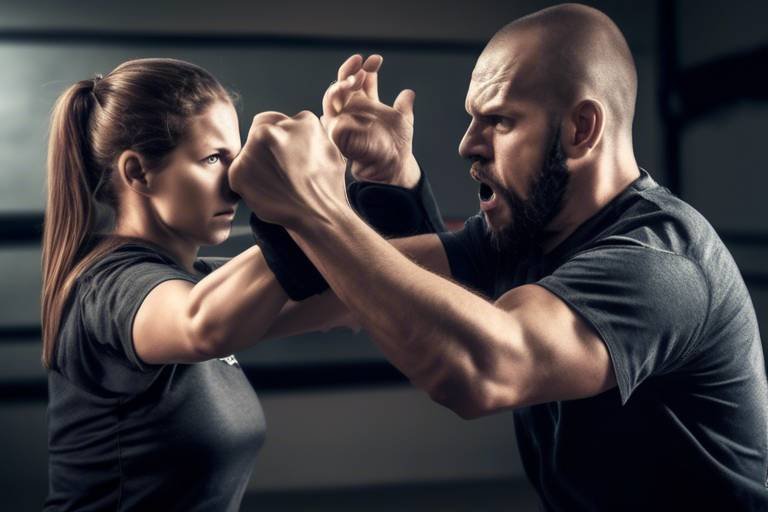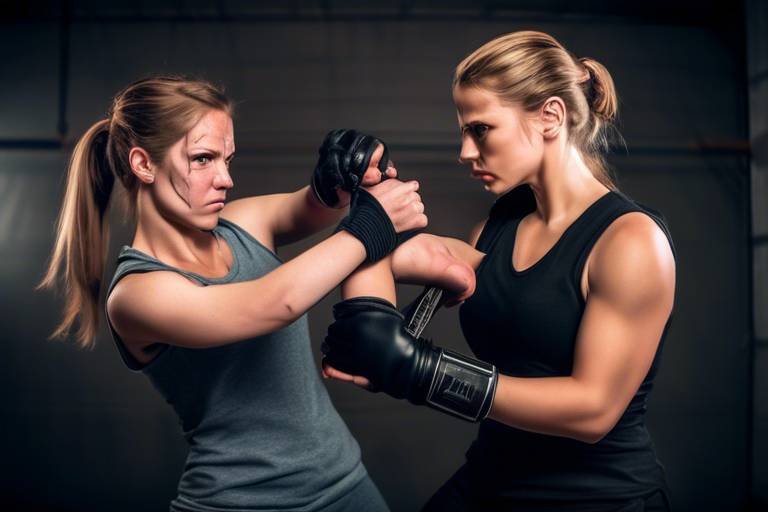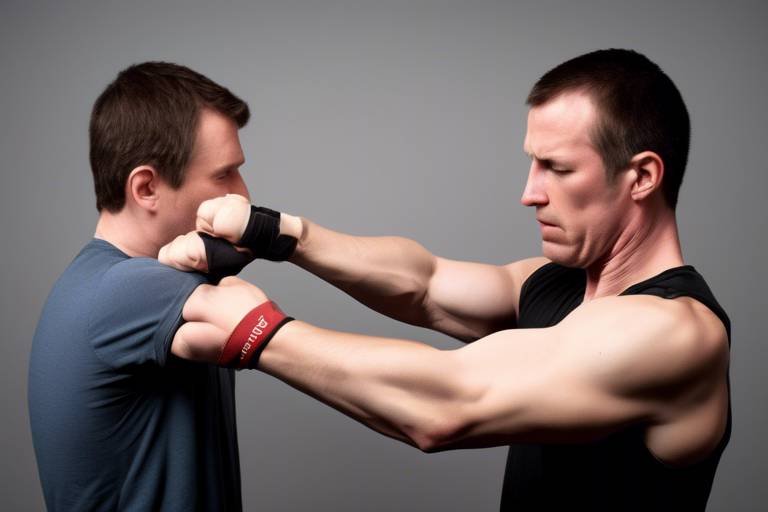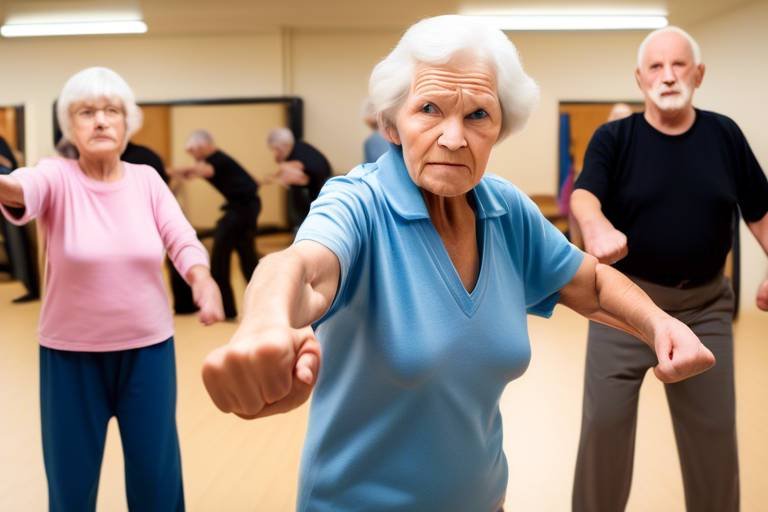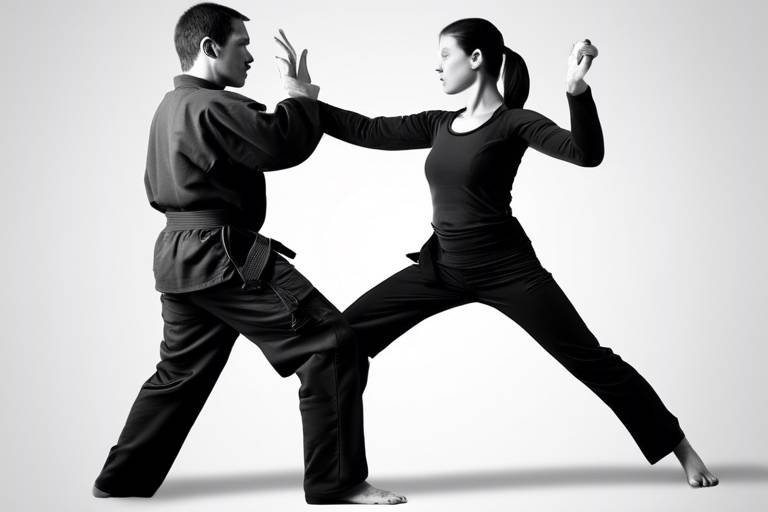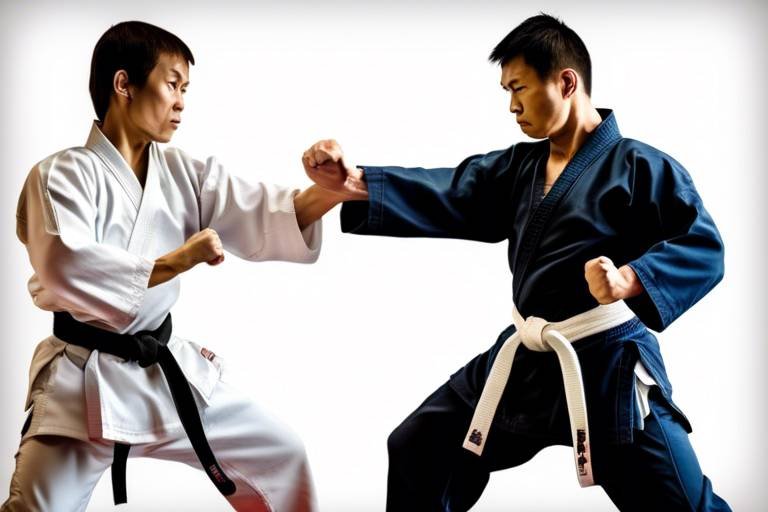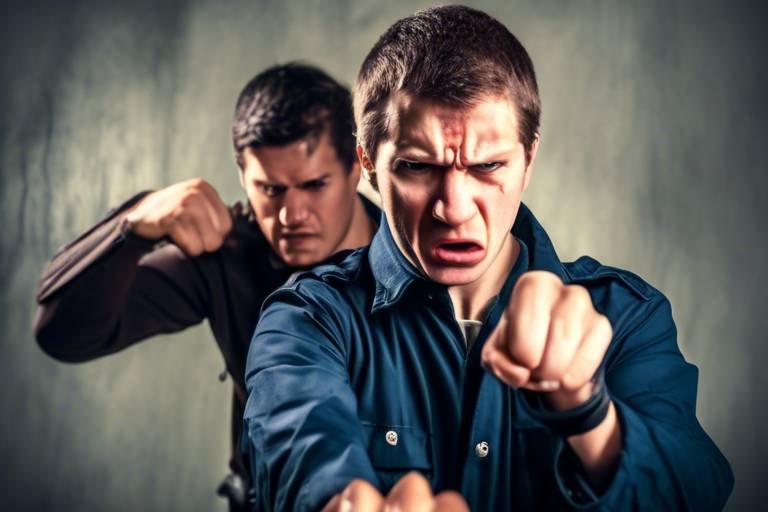Top Three Techniques for Non-Violent Self-Defense Training
This article explores effective non-violent self-defense techniques that empower individuals to protect themselves while promoting conflict resolution and personal safety without resorting to aggression. In a world where conflicts can arise unexpectedly, it's essential to equip ourselves with the right tools to handle tense situations gracefully. Non-violent self-defense isn't just about avoiding physical confrontation; it's about fostering an environment where communication and understanding take precedence over aggression. By mastering these techniques, you'll not only enhance your personal safety but also contribute to a more peaceful society.
At the heart of non-violent self-defense lies a fundamental principle: awareness. Being aware of your surroundings allows you to anticipate potential threats and respond appropriately. This awareness goes hand in hand with de-escalation techniques, which aim to diffuse potentially dangerous situations without resorting to aggression. Personal empowerment is another crucial aspect, as it encourages individuals to take charge of their safety and well-being. By understanding the dynamics of conflict and the power of peaceful resolution, you can navigate challenging situations with confidence and poise.
One of the most powerful tools in your non-violent self-defense arsenal is your voice. Verbal de-escalation involves using communication skills to diffuse tense situations before they escalate into conflict. It’s about creating a dialogue that fosters understanding rather than aggression. This technique requires a combination of active listening and maintaining calm body language.
Active listening is not just about hearing words; it's about understanding the emotions and intentions behind those words. When you genuinely listen to someone, you validate their feelings and show that you care. This can significantly lower the temperature of a heated exchange. For example, if someone is upset, acknowledging their feelings can pave the way for a more constructive conversation. You might say, “I hear you, and it sounds like you’re really frustrated. Let’s talk about it.” This simple act can transform a confrontation into a collaborative discussion.
Your body language can either escalate or de-escalate a situation. Maintaining a relaxed posture, making gentle eye contact, and avoiding aggressive gestures can help create a sense of calm. Imagine you’re in a tense conversation; if you lean in with open arms and a soft tone, you invite dialogue rather than conflict. Remember, your demeanor can set the stage for how others respond to you.
Situational awareness is your radar for personal safety. It involves being conscious of your environment and recognizing potential threats before they escalate. This proactive approach can be the difference between a peaceful day and a dangerous encounter. By honing your situational awareness, you can spot red flags and take necessary actions to protect yourself.
Learning to identify potential threats is a skill that anyone can develop. Look for behaviors that seem out of place or individuals who appear overly aggressive. For instance, if someone is approaching you with an intense gaze and clenched fists, it might be time to reassess your surroundings. Trust your instincts; if something feels off, it probably is.
Understanding your environment is crucial for planning safe escape routes. Whether you’re in a crowded mall or a quiet park, always be aware of exits and safe spaces. This foresight can help you navigate away from danger quickly. In a restaurant, for example, position yourself where you can see the entrance and exit. This simple strategy can provide you with a sense of security and readiness.
When conflicts arise, having effective resolution strategies can help you navigate through them peacefully. Conflict resolution is about finding common ground and fostering understanding. It emphasizes negotiation and compromise, allowing you to express your needs while respecting others.
Effective negotiation is an art. It involves clear communication and a willingness to find a middle ground. Start by stating your needs and listening to the other party's perspective. Use "I" statements to express how you feel without placing blame. For instance, saying “I feel uncomfortable when…” rather than “You make me uncomfortable” can open doors to constructive dialogue.
Establishing clear boundaries is essential in conflict resolution. It’s about knowing your limits and articulating them assertively. When you set boundaries, you communicate what is acceptable and what isn’t, which can prevent escalation. For example, if someone invades your personal space, calmly saying, “I need a bit more space, please,” can help maintain a respectful interaction.
- What is non-violent self-defense? Non-violent self-defense focuses on techniques that prioritize communication and de-escalation over physical confrontation.
- Can anyone learn these techniques? Absolutely! These techniques are accessible to everyone, regardless of age or physical ability.
- How can I practice these skills? Engage in role-playing scenarios with friends or attend workshops focused on communication and conflict resolution.
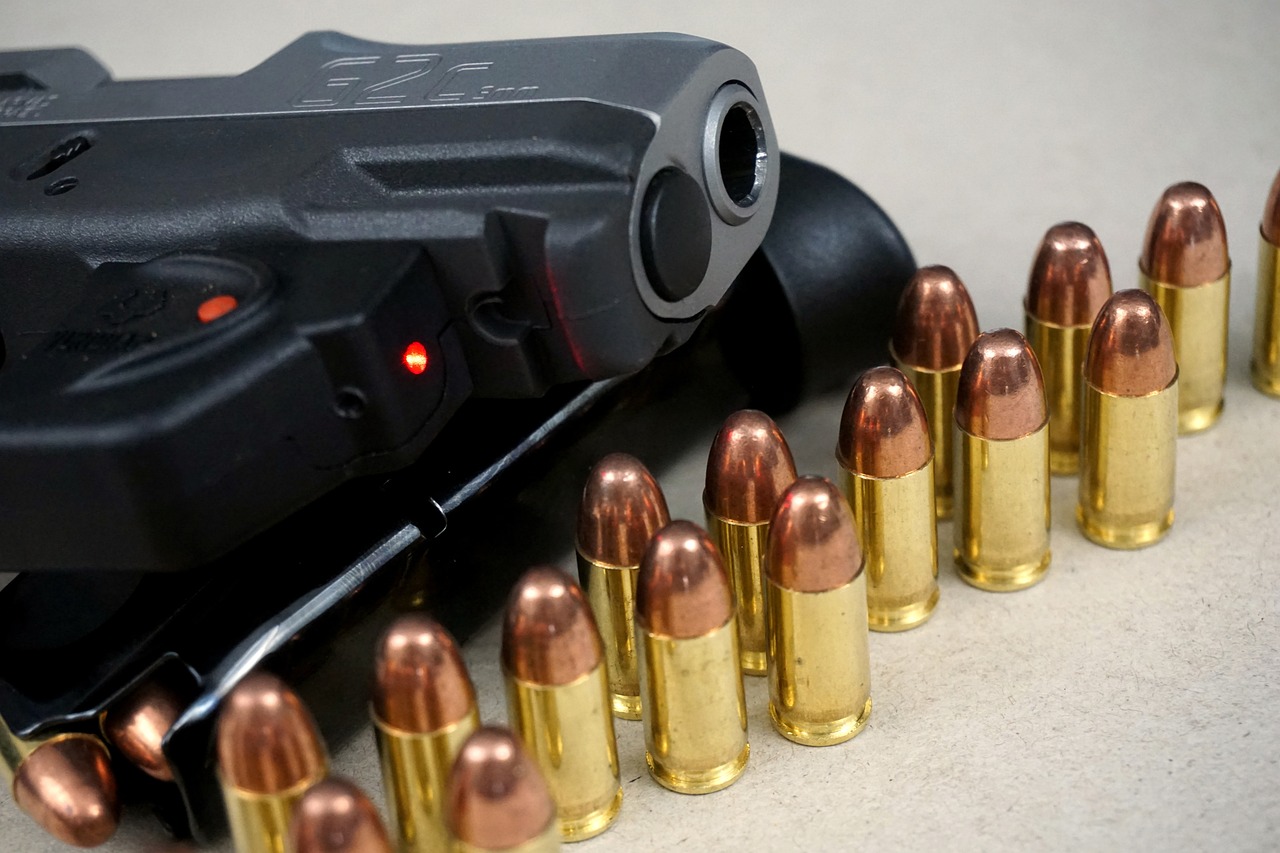
Understanding Non-Violent Self-Defense
When we think about self-defense, our minds often jump to physical confrontations, but non-violent self-defense is a powerful approach that emphasizes awareness, communication, and personal empowerment. Imagine walking through a crowded street and sensing the tension in the air; instead of bracing for a fight, you can choose to navigate the situation with skill and grace. This mindset is not just about avoiding violence but also about fostering a culture of peace and understanding.
The principles of non-violent self-defense hinge on a few key elements that can transform how we handle potential threats. First and foremost is awareness. Being aware of your surroundings allows you to identify potential risks before they escalate into dangerous situations. It’s like having a sixth sense—tuning into the energy around you can make all the difference. Secondly, de-escalation plays a crucial role. This involves using verbal communication and body language to diffuse tension and promote dialogue rather than conflict. Think of it as a dance; if one partner leads with calmness and understanding, the other is likely to follow suit.
Moreover, personal empowerment is at the heart of non-violent self-defense. It’s about equipping individuals with the tools they need to feel confident in their ability to handle challenging situations without resorting to aggression. This empowerment comes from knowledge and practice, allowing people to believe in their capacity to navigate conflicts peacefully. By embracing these principles, we can create a safer environment for ourselves and those around us, transforming the way we approach conflict.
To further illustrate these concepts, let’s break down the core elements of non-violent self-defense:
| Element | Description |
|---|---|
| Awareness | The ability to recognize your surroundings and potential threats before they escalate. |
| De-escalation | Using calm communication and body language to diffuse tension. |
| Personal Empowerment | Equipping individuals with the confidence and skills to handle situations without aggression. |
In summary, understanding non-violent self-defense is about more than just avoiding physical confrontation; it’s about cultivating a mindset that prioritizes awareness, communication, and empowerment. By adopting these principles, we can not only protect ourselves but also contribute to a more peaceful world where conflicts are resolved through dialogue rather than violence. So, the next time you find yourself in a potentially dangerous situation, remember that you have the power to choose a different path—one that leads to understanding and resolution.

Technique One: Verbal De-Escalation
When it comes to self-defense, the first line of defense is often our words. Verbal de-escalation is a powerful technique that can diffuse tense situations before they spiral out of control. Imagine walking into a room where two people are arguing. Instead of jumping into the fray, you can use your voice as a tool to calm the storm. This technique encourages communication and understanding, turning potential conflict into a constructive conversation.
At its core, verbal de-escalation is about effective communication. It involves not just what you say, but how you say it. Your tone, choice of words, and even your body language play a crucial role in how your message is received. Think of it as a dance; if one partner is out of sync, the whole routine can fall apart. In this case, your goal is to keep the rhythm smooth and harmonious, ensuring that both parties feel heard and respected.
One of the most vital components of verbal de-escalation is active listening. This means truly hearing what the other person is saying, rather than just waiting for your turn to speak. When you actively listen, you validate their feelings and show that you care about their perspective. This can significantly lower the emotional temperature of the conversation. Here are a few tips to enhance your active listening skills:
- Maintain eye contact: This shows that you are engaged and interested.
- Paraphrase: Repeat back what the other person has said in your own words to confirm understanding.
- Acknowledge feelings: Use phrases like "I can see that you're upset" to show empathy.
By employing these techniques, you create an atmosphere of trust and respect, making it easier for the other person to communicate openly.
Your body language can speak volumes, often saying more than your words ever could. When you approach a tense situation, maintaining a calm demeanor is crucial. This means keeping your posture relaxed, avoiding aggressive gestures, and ensuring your facial expressions convey empathy rather than hostility. For example, crossing your arms can signal defensiveness, while open palms can indicate a willingness to communicate. Consider the following strategies:
- Keep a neutral stance: Stand or sit with your arms at your sides to appear approachable.
- Use a soft tone: A calm voice can help soothe heightened emotions.
- Be mindful of your facial expressions: A gentle smile can go a long way in easing tension.
By mastering the art of calm body language, you not only enhance your verbal communication but also create a safe space for dialogue. Remember, the goal is not to win an argument but to foster understanding and resolution.
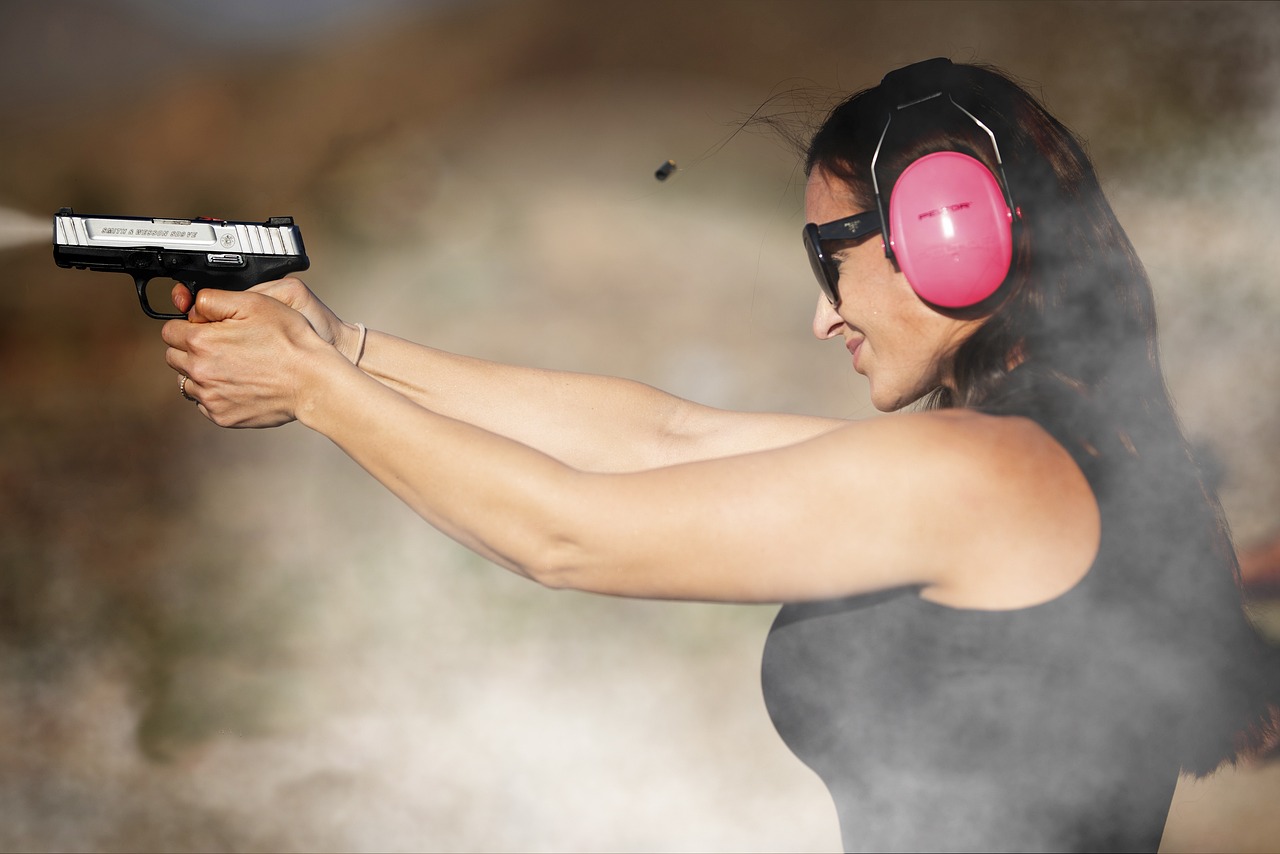
Active Listening Skills
Active listening is not just about hearing the words that someone is saying; it's about truly engaging with the speaker and understanding their message. Imagine you're in a heated discussion, and instead of firing back with your own opinions, you take a moment to absorb what the other person is expressing. This simple act can be transformative. By practicing active listening, you can defuse tension and create an atmosphere of respect and understanding.
So, how do you become an active listener? First, it’s essential to give your full attention to the speaker. This means putting away distractions like your phone or the TV. Make eye contact and nod occasionally to show that you’re engaged. It’s like tuning in to your favorite radio station; you want to catch every note and lyric. When you focus on the speaker, it not only makes them feel valued but also allows you to pick up on non-verbal cues that can be crucial in understanding their feelings.
Another vital aspect of active listening is reflecting back what you've heard. This doesn’t mean parroting their words but rather summarizing their points to ensure clarity. For example, you might say, “What I hear you saying is that you feel frustrated because…” This technique not only confirms that you’re listening but also encourages the speaker to elaborate further, leading to a more profound understanding of the issue at hand.
Furthermore, it’s essential to avoid interrupting. This can be challenging, especially if you feel strongly about the topic. However, interruptions can signal to the speaker that their thoughts are not valued. Instead, practice waiting until they finish speaking before sharing your perspective. Think of it like a dance; both partners need to move in sync for the performance to be beautiful.
Lastly, remember that empathy plays a significant role in active listening. Try to put yourself in the other person's shoes. How would you feel if you were in their position? This emotional connection can help you respond more thoughtfully and compassionately. By combining these techniques—giving full attention, reflecting back, avoiding interruptions, and practicing empathy—you can significantly enhance your active listening skills and foster better communication.
- What is active listening? Active listening is a communication technique that involves fully concentrating, understanding, responding, and remembering what is being said.
- How can I improve my active listening skills? You can improve by minimizing distractions, reflecting back what you hear, avoiding interruptions, and practicing empathy.
- Why is active listening important in conflict resolution? It helps to clarify misunderstandings, shows respect for the speaker, and can lead to more peaceful resolutions.

Using Calm Body Language
When it comes to non-violent self-defense, one of the most powerful tools at your disposal is calm body language. Imagine walking into a room filled with tension, where every person seems on edge. Now, picture yourself standing tall, shoulders back, and wearing a gentle, reassuring expression. This simple act of maintaining a calm demeanor can significantly influence the atmosphere around you. Your body language communicates your intentions even before you say a word, and it can either escalate or de-escalate a situation.
So, what does calm body language look like? It’s all about posture, gestures, and facial expressions. Here are a few key elements to consider:
- Posture: Stand or sit up straight, which conveys confidence and openness. Avoid crossing your arms, as this can signal defensiveness or aggression.
- Gestures: Use open hand gestures when speaking. This not only shows that you have nothing to hide but also invites others to engage in a more positive interaction.
- Facial Expressions: A soft smile can go a long way. It signals friendliness and approachability, making it easier for others to relax.
Additionally, maintaining appropriate eye contact is crucial. Too much can feel confrontational, while too little might suggest disinterest or fear. Striking the right balance can help establish a connection and foster trust. Think of your body language as a silent conversation that sets the tone for the verbal exchange to follow.
But here’s the kicker: your body language must align with your words. If you say, “I’m not angry,” while your fists are clenched and your brow is furrowed, people will probably believe your body over your words. Authenticity is key! When you embody calmness, you’re not just reducing your own stress levels; you’re also influencing those around you to feel more at ease.
In high-stress situations, remembering to breathe deeply can also help ground you. This simple act can relax your muscles and help you project calmness. Consider it your secret weapon! By consciously relaxing your body, you send a message that you’re in control of the situation, which can be incredibly disarming for others.
Ultimately, using calm body language is about creating a safe space for communication. It encourages dialogue rather than discord, allowing for a more constructive resolution to conflicts. So, the next time you find yourself in a potentially volatile situation, remember that your body is speaking just as loudly as your words. Choose to convey calmness, and you might just change the course of the interaction.
Q: How can I practice calm body language?
A: One effective way is to practice in front of a mirror. Observe your posture, gestures, and facial expressions while speaking. You can also role-play with friends to simulate tense situations and receive feedback.
Q: What if I feel nervous and can’t maintain calm body language?
A: It’s natural to feel nervous! Focus on your breathing. Slow, deep breaths can help calm your mind and body, making it easier to project a relaxed demeanor.
Q: Can body language really affect the outcome of a conflict?
A: Absolutely! Calm body language can de-escalate tensions and foster a more open dialogue, increasing the likelihood of a positive resolution.
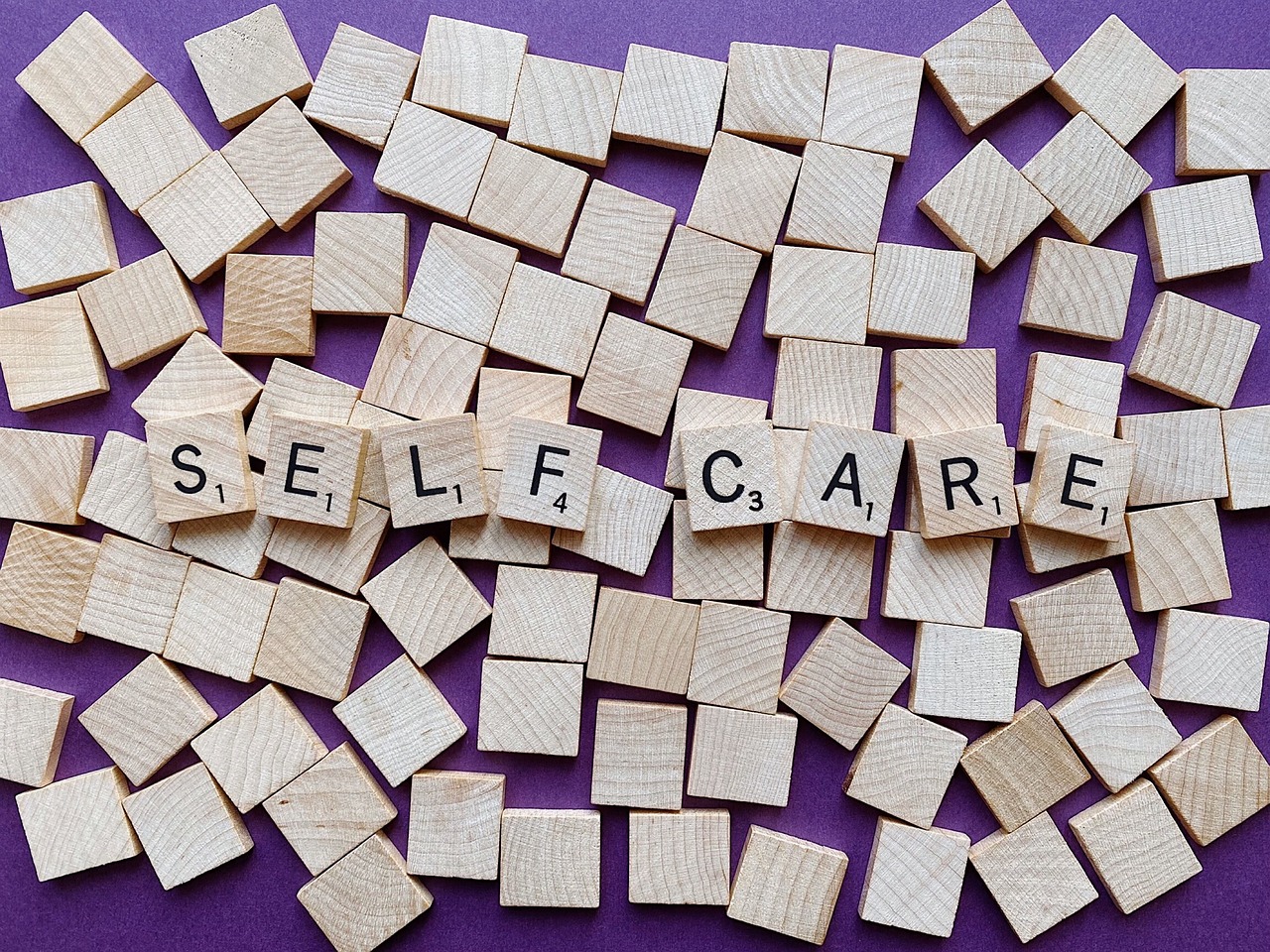
Technique Two: Situational Awareness
Situational awareness is a crucial skill that can significantly enhance your personal safety. Imagine walking through a busy street, and instead of being absorbed in your phone or lost in thought, you're fully aware of your surroundings. This doesn’t mean you have to be paranoid or overly cautious; rather, it’s about being present and observant. By honing your situational awareness, you can identify potential threats before they escalate into dangerous situations, allowing you to take proactive measures to protect yourself.
One of the key components of situational awareness is the ability to identify potential threats. This involves recognizing behaviors or situations that might indicate danger. For instance, if you notice someone acting suspiciously—like loitering in an area where they don’t belong or watching you intently—it’s essential to trust your instincts. Your gut feeling is often a reliable indicator that something isn’t right. By being aware of these signs, you can make informed decisions about your next steps, such as crossing the street or finding a more populated area.
Additionally, understanding your environment plays a vital role in maintaining situational awareness. This means knowing the layout of the places you frequent, such as your neighborhood, workplace, or local park. Take a moment to think about creating safe escape routes in various settings. For example, when you enter a restaurant, quickly scan for exits and safe spaces. This mental mapping can be a lifesaver in emergencies, allowing you to act swiftly without wasting precious time. Here’s a quick tip: when you enter a new environment, take a mental note of at least two exits and any security personnel present. This simple practice can make a world of difference.
To further illustrate the importance of situational awareness, consider this: You’re at a crowded concert. The music is loud, and everyone is enjoying the moment. However, amidst the fun, you notice a group of individuals who seem overly aggressive toward one another. Instead of ignoring the situation, your awareness kicks in, prompting you to move to a different area or alert security. This proactive approach not only keeps you safe but can also help de-escalate a potentially hazardous situation.
In conclusion, developing situational awareness is not just about being alert; it’s about empowering yourself to respond effectively to your surroundings. By practicing these skills, you can enhance your personal safety and navigate the world with greater confidence. Remember, staying aware doesn’t mean living in fear; it means being prepared and informed, ready to take action when necessary.
- What is situational awareness? Situational awareness is the ability to perceive and understand your environment, recognizing potential threats and making informed decisions to ensure your safety.
- How can I improve my situational awareness? You can improve your situational awareness by practicing mindfulness, observing your surroundings regularly, and mentally mapping safe escape routes in various environments.
- Is situational awareness only important in dangerous situations? No, situational awareness is important in everyday life as it helps you make better decisions and enhances your overall safety and well-being.

Identifying Potential Threats
In the realm of non-violent self-defense, is a critical skill that can mean the difference between a safe encounter and a dangerous situation. It's not just about being paranoid; it's about being aware and prepared. Imagine walking through a park and noticing a group of individuals acting unusually. Instead of dismissing your gut feeling, tuning into your surroundings can help you assess whether these individuals pose a risk. The key here is to develop a keen sense of situational awareness.
First and foremost, it’s essential to recognize the signs that may indicate a potential threat. These can include:
- Body Language: Observe the posture and movements of those around you. Are they fidgeting, staring, or displaying aggressive gestures?
- Verbal Cues: Pay attention to the tone of voice and choice of words. Are they hostile or threatening?
- Group Dynamics: Watch how groups interact. Is there an individual who seems to be instigating or controlling the others?
By honing in on these behaviors, you can start to paint a clearer picture of your environment. Think of it as being a detective in your own life. Just as detectives piece together clues to solve a mystery, you can connect the dots to determine if a situation is safe or if it warrants caution.
Moreover, understanding the context of your environment is equally important. For instance, the same behavior in a crowded festival might not carry the same weight as it would in a dimly lit alley. Contextual awareness helps you gauge whether your instincts are justified. This means being aware of the time of day, the location, and the general atmosphere. Is it a busy area with lots of people, or is it isolated? Are there security personnel nearby who can assist if needed?
Lastly, practice makes perfect. Regularly engaging in scenarios where you assess potential threats can sharpen your skills. Consider participating in workshops or training sessions focused on situational awareness. These environments allow you to practice without the pressure of real-life stakes, helping you to react more effectively when it truly matters.
In conclusion, identifying potential threats is not about living in fear but about empowering yourself with knowledge and awareness. By understanding body language, verbal cues, group dynamics, and context, you can significantly enhance your ability to navigate potentially dangerous situations. Remember, the goal is to stay safe while promoting peace and understanding in your interactions.
- What should I do if I feel threatened? Trust your instincts and remove yourself from the situation if possible. Seek help from authorities if necessary.
- Can verbal de-escalation techniques really work? Yes, often, calm and respectful communication can diffuse tense situations.
- How can I improve my situational awareness? Practice being present in your environment, observe details, and engage in activities that enhance your observation skills.

Creating Safe Escape Routes
When it comes to personal safety, one of the most crucial aspects is knowing how to create safe escape routes. Imagine being in a crowded area and sensing that something feels off; your instincts kick in, and suddenly, you realize that having a plan can be the difference between safety and danger. The ability to identify and utilize escape routes can empower you to act swiftly and decisively in potentially threatening situations.
To start, it’s essential to familiarize yourself with your surroundings wherever you go. This means taking a moment to look around and identify exits, emergency services, and potential hiding spots. Awareness is your first line of defense. In a restaurant, for instance, you might notice where the exits are located, while in a shopping mall, you can locate security personnel and emergency exits. By mentally mapping these locations, you’ll be better prepared to navigate your way to safety if needed.
Another critical factor in creating safe escape routes is understanding the layout of the space you’re in. Consider the following:
- Identify Exits: Always know where the nearest exits are located. Look for both main and secondary exits.
- Assess Obstacles: Be aware of any obstacles that may hinder your escape, such as furniture, crowds, or construction.
- Plan Your Route: Visualize the quickest path to safety. Think about alternative routes in case your primary one is blocked.
In addition to physical spaces, think about your escape routes in various scenarios. For example, if you’re in a car, consider where you could go if you felt threatened. Is there a police station nearby? A well-lit, populated area? Having these options in mind can help you react faster.
Moreover, practicing these routes can be incredibly beneficial. Just as athletes train for their sport, you can train your mind and body to respond effectively in emergencies. Walk through different scenarios in your mind and even role-play with friends or family. This practice can make your responses more instinctual when the time comes.
Lastly, remember that creating safe escape routes is not just about physical spaces; it’s also about your mental preparedness. Stay calm, trust your instincts, and have confidence in your ability to navigate to safety. The more prepared you are, the less likely panic will set in, allowing you to think clearly and act decisively.
Q: What should I do if I can't find an exit in an emergency?
A: If you can’t find an exit, look for alternative ways to create distance from the threat. This could mean finding a place to hide or barricading yourself in a secure area until help arrives.
Q: How can I improve my situational awareness?
A: Practice being mindful of your surroundings by engaging in activities such as walking in public spaces and consciously observing your environment. This will help enhance your overall awareness over time.
Q: Are there any apps that can help with safety planning?
A: Yes, several safety apps can help you share your location with trusted contacts, send alerts in emergencies, and even provide maps of your surroundings to identify safe routes.
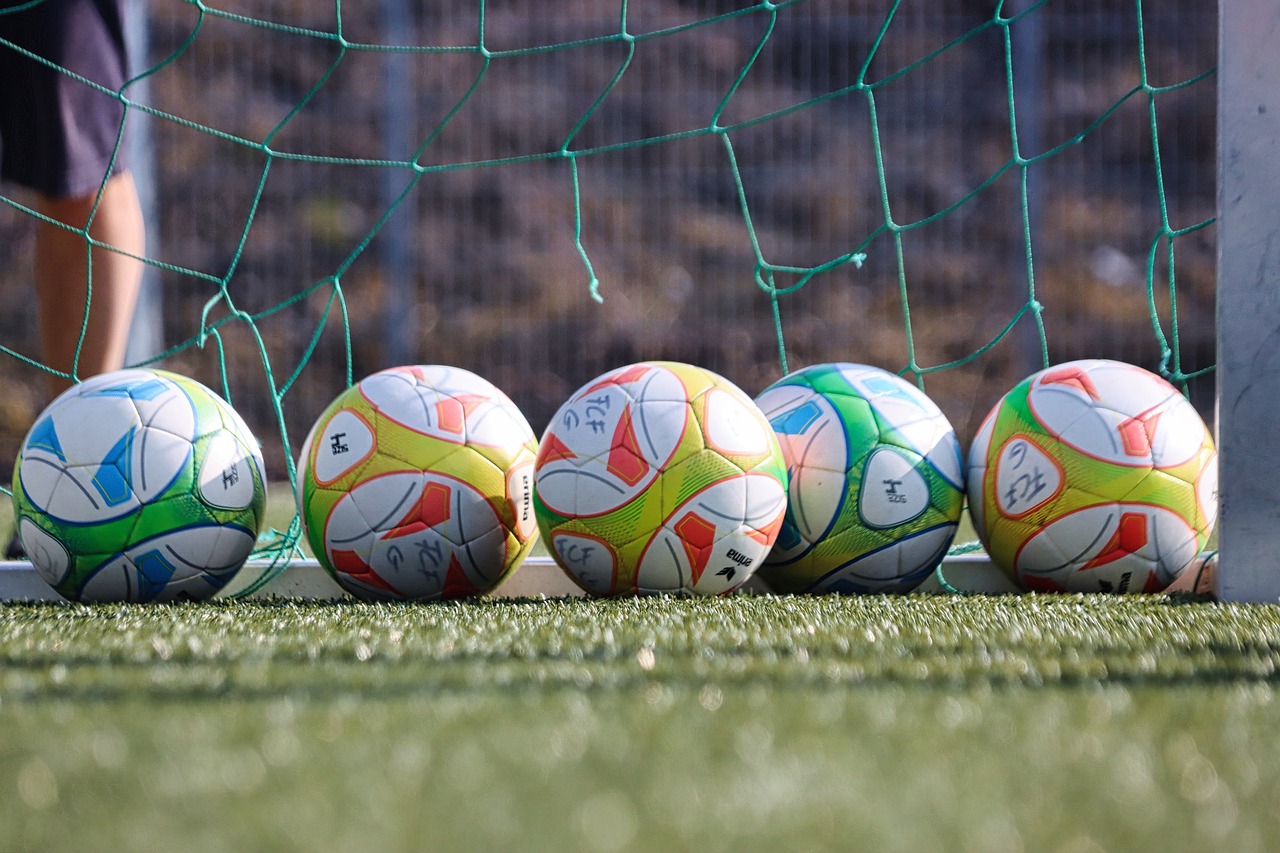
Technique Three: Conflict Resolution Strategies
When it comes to avoiding physical confrontations, conflict resolution strategies play a crucial role. These techniques are not just about talking things out; they are about fostering a deeper understanding between individuals. Think of it as being a bridge builder in a world filled with misunderstandings and miscommunications. By learning how to negotiate effectively and set clear boundaries, you can navigate through disagreements like a skilled sailor steering through stormy seas.
One of the most effective methods in resolving conflicts is through negotiation techniques. Imagine you’re in a heated discussion with someone who disagrees with you. Instead of letting emotions take over, you can use negotiation to express your point of view while also respecting theirs. This approach is not just about winning an argument; it’s about finding common ground. For instance, using phrases like “I understand where you’re coming from” can create an atmosphere of mutual respect, making it easier to reach a compromise. The goal here is to create a win-win situation where both parties feel heard and valued.
Another vital aspect of conflict resolution is setting boundaries. This means clearly articulating what you are comfortable with and what you are not. Boundaries are essential for maintaining healthy relationships, whether they are personal or professional. Think of them as the invisible lines that protect your emotional space. When you set boundaries, you're essentially saying, “This is where I stand, and I need you to respect that.” For example, if someone is being overly aggressive in a discussion, calmly stating, “I’d prefer if we could discuss this without raising our voices,” can help steer the conversation back to a more constructive tone.
To ensure that these strategies are effective, it’s important to keep a few key principles in mind:
- Stay Calm: Keeping your composure can help de-escalate the situation.
- Be Respectful: Always approach the other person with respect, even if you disagree.
- Focus on Solutions: Rather than dwelling on the problem, guide the conversation toward finding a resolution.
Incorporating these strategies into your daily interactions can significantly reduce the likelihood of conflicts escalating into violence. Just remember, the goal isn’t to avoid conflict altogether; rather, it’s about managing it in a way that promotes understanding and cooperation. In doing so, you empower yourself and others to engage in healthier, more constructive dialogues.
Q: What are conflict resolution strategies?
A: Conflict resolution strategies are techniques that help individuals address disagreements in a constructive manner, focusing on negotiation and setting boundaries to avoid escalation.
Q: How can I improve my negotiation skills?
A: You can improve your negotiation skills by practicing active listening, being open to compromise, and maintaining a calm demeanor during discussions.
Q: Why is setting boundaries important?
A: Setting boundaries is important because it helps establish what is acceptable behavior, preventing misunderstandings and promoting healthier relationships.

Negotiation Techniques
When it comes to resolving conflicts, mastering can be your secret weapon. Think of negotiation as a dance; both parties must move in sync to avoid stepping on each other's toes. The key here is to communicate effectively while remaining respectful and open-minded. One of the first techniques you can employ is to establish rapport with the other party. This doesn’t mean you have to become best friends, but showing genuine interest in their perspective can create a more conducive environment for dialogue.
Another important technique is to focus on interests, not positions. Instead of rigidly sticking to your demands, try to understand the underlying interests of the other party. This approach often reveals common ground that can lead to a win-win solution. For instance, if two coworkers are arguing over project responsibilities, instead of arguing about who does what, they could discuss their strengths and how best to utilize them for the project's success. This shift in focus can transform a heated confrontation into a collaborative discussion.
Moreover, active listening plays a crucial role in effective negotiation. It’s not just about hearing words; it’s about understanding the emotions and intentions behind them. When you actively listen, you can respond more thoughtfully, which can significantly de-escalate tension. Use phrases like “I understand that you feel…” or “What I hear you saying is…” to validate their feelings and encourage openness. This technique can often lead to more constructive conversations and pave the way for resolution.
Lastly, don’t forget the power of non-verbal communication. Your body language, eye contact, and even your tone of voice can convey messages that words sometimes cannot. Maintaining a calm and open posture can help ease the atmosphere, making the other party feel more comfortable sharing their thoughts. In contrast, crossing your arms or avoiding eye contact can signal defensiveness or disinterest, which can escalate tensions.
To summarize, effective negotiation is about understanding and collaboration. Here are some key points to keep in mind:
- Establish rapport to create a friendly atmosphere.
- Focus on interests rather than positions to identify mutual benefits.
- Practice active listening to enhance understanding and validation.
- Be mindful of non-verbal cues to ensure your body language aligns with your intentions.
By incorporating these negotiation techniques, you can navigate conflicts with confidence and grace, ultimately leading to peaceful resolutions.
Q1: What if the other party is not willing to negotiate?
A1: Sometimes, you may encounter individuals who are resistant to negotiation. In such cases, it’s important to remain calm and patient. Try to understand their perspective and find common ground. If they still refuse to engage, it may be best to step back and revisit the conversation later.
Q2: How can I improve my active listening skills?
A2: Improving active listening involves practice. Focus on the speaker, avoid interrupting, and paraphrase what they say to ensure understanding. Additionally, ask open-ended questions to encourage further dialogue.
Q3: Can negotiation techniques be used in everyday situations?
A3: Absolutely! Negotiation techniques are not just for formal settings; they can be applied in daily interactions, from negotiating with family members about chores to discussing project timelines with coworkers.

Setting Boundaries
Setting boundaries is an essential skill in conflict resolution that can significantly reduce the likelihood of escalation. Imagine boundaries as invisible lines that define where your comfort zone ends and where someone else's begins. By establishing these lines, you communicate your personal limits clearly and assertively, which can prevent misunderstandings and potential conflicts. But how do you effectively set these boundaries?
First and foremost, it’s crucial to understand that setting boundaries is not about being confrontational; rather, it’s about being honest and respectful. When you communicate your limits, you’re not just protecting yourself, but also giving others the opportunity to understand your needs. This is where the power of assertive communication comes into play. Instead of saying, “You always interrupt me,” you might say, “I feel disrespected when I’m interrupted during conversations. Can we take turns speaking?” This approach not only expresses your feelings but also invites dialogue.
Another important aspect of setting boundaries is consistency. Once you’ve articulated your limits, it’s vital to stick to them. If you allow someone to cross a boundary once, they may feel empowered to do so again. Think of it like a fence around your garden; if you leave the gate open, the deer will come in and munch on your flowers. By being consistent, you reinforce your boundaries and make it clear that they are not negotiable.
Moreover, it’s essential to recognize that setting boundaries is a two-way street. While you have the right to express your limits, it’s equally important to respect the boundaries of others. This mutual respect fosters a healthier environment for communication and reduces the chances of conflict. If someone expresses their boundaries to you, listen actively and consider their feelings. Just as you want your boundaries respected, others do too.
To help you visualize the process of setting boundaries, here’s a simple table that outlines effective strategies:
| Strategy | Description |
|---|---|
| Be Clear | Use straightforward language to express your limits. |
| Stay Calm | Maintain a composed demeanor to prevent escalation. |
| Use "I" Statements | Frame your feelings in a way that focuses on your experience. |
| Be Consistent | Reinforce your boundaries by standing firm. |
| Respect Others' Boundaries | Listen and acknowledge the limits set by others. |
In conclusion, setting boundaries is not just about protecting yourself; it’s about fostering a culture of respect and understanding. By communicating your limits clearly and consistently, you can create a safer environment for yourself and those around you. Remember, boundaries are not walls; they are bridges to better communication and conflict resolution.
- What are boundaries? Boundaries are personal limits that define how you want to be treated by others.
- Why are boundaries important? They help maintain respect in relationships and prevent conflicts.
- How do I know if my boundaries are being crossed? You may feel uncomfortable, disrespected, or anxious when your boundaries are not respected.
- Can boundaries change over time? Yes, as you grow and change, your boundaries may also evolve.
Frequently Asked Questions
- What is non-violent self-defense?
Non-violent self-defense refers to techniques and strategies that empower individuals to protect themselves without resorting to physical aggression. It focuses on communication, awareness, and conflict resolution to handle potentially dangerous situations safely.
- How can verbal de-escalation help in self-defense?
Verbal de-escalation involves using effective communication skills to diffuse tense situations. By actively listening and maintaining calm body language, individuals can often prevent conflicts from escalating into violence, ensuring their safety and the safety of others.
- What are some key elements of situational awareness?
Situational awareness is about being aware of your surroundings and recognizing potential threats. Key elements include observing the behavior of people around you, identifying exit routes, and being mindful of your environment to make informed decisions about your safety.
- Can conflict resolution strategies be effective in all situations?
While conflict resolution strategies, like negotiation and setting boundaries, are generally effective, their success can depend on the specific context and individuals involved. It's essential to assess each situation carefully and adapt your approach accordingly.
- How can I improve my active listening skills?
Improving active listening skills involves focusing fully on the speaker, avoiding interruptions, and reflecting on what they say. Practicing empathy and asking clarifying questions can also enhance your ability to understand and respond effectively, fostering better communication.
- What should I do if a situation escalates despite my efforts?
If a situation begins to escalate despite your attempts to de-escalate, prioritize your safety. Look for opportunities to exit the situation, seek help from others nearby, or contact authorities if necessary. Remember, your well-being is the most important aspect.

